Archive for March, 2025

Universe Sandbox Roadmap: 2025 & Beyond
Mar 31st
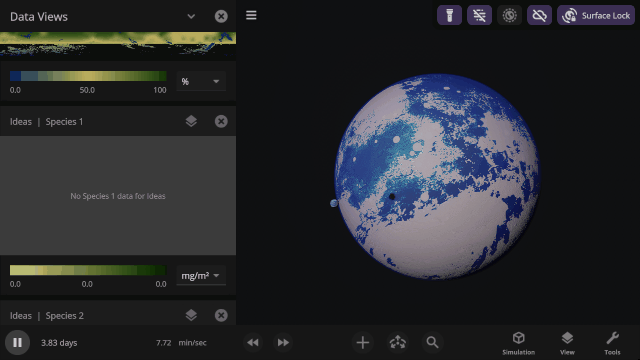
We started 2025 by releasing our major graphics overhaul, but we have much more planned for the year, including allowing meteors to burn up in an atmosphere, simulating basic life, and getting Universe Sandbox on mobile devices so you can create and destroy on the go. Before diving into details, let’s look back on some highlights from 2024.
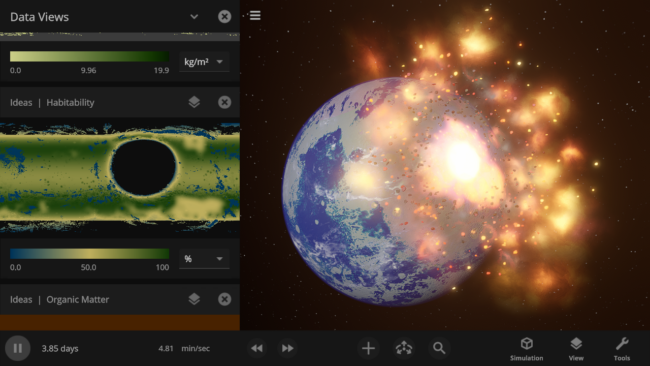
Highlights from 2024
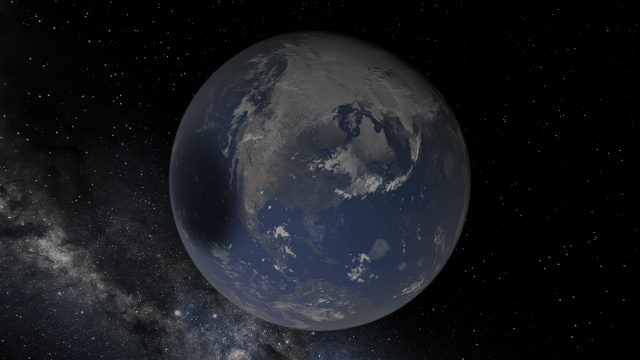
We spent 2024 working on our major graphics overhaul, released March 2025, and many of the other in-progress features mentioned in this roadmap. In addition to the awe-inspiring realistic graphics, our March graphics update included many quality-of-life improvements. Our biggest accomplishments from the year include:
- Improving material simulation and manipulation with more realistic atmosphere colors and opacity and the ability to swap one material for another. (Update 34.1, March 2024)
- Replacing our 10-year-old graphics technology with a state-of-the-art system so you can immerse yourself in a more awe-inspiring and realistic universe. (Update 35, March 2025)
- Implementing a new interface system that automatically positions, resizes, and closes panels so you can focus on manipulating the universe instead of managing panels. (Update 35, March 2025)
The new graphics rendering and user interface systems were major milestones on our 2024 Roadmap.
What’s the Plan for 2025?
Finish our major graphics update.
- Released on March 3, 2025!
- Add basic life simulation where vegetation grows, dies, and gets eaten.
- Optimize and rewrite our simulation using Unity’s Data-Oriented Technology Stack (DOTS).
- Bring Universe Sandbox to phones and tablets (iOS & Android).
We plan to work on all these projects in 2025, but some, like getting Universe Sandbox on mobile devices, have been in the works for years. Additional challenges may arise that delay features, and our priorities may change.
Even More Graphics Improvements: The Saga Continues
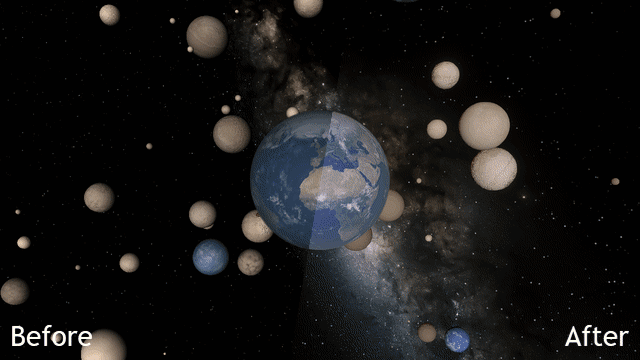
Earlier this year, we released our major graphics update with hot, non-stellar objects emitting light, physically based lighting, and more. But we’re not done yet! We’re planning even more graphics features, including object selection highlights that are unique to the object’s shape and new point light object.
- But Wait, There’s More!
- Now that our new graphics rendering system is out, we’re planning to utilize it to add even more graphics features, including
- Redesigning object selection outlines to be more visible, useful, and unique to that object’s shape instead of always being a circle.
- Adding new Point Lights with customizable colors to light up your simulations without adding stars (and boiling Earth) for that perfect shot.
- Now that our new graphics rendering system is out, we’re planning to utilize it to add even more graphics features, including
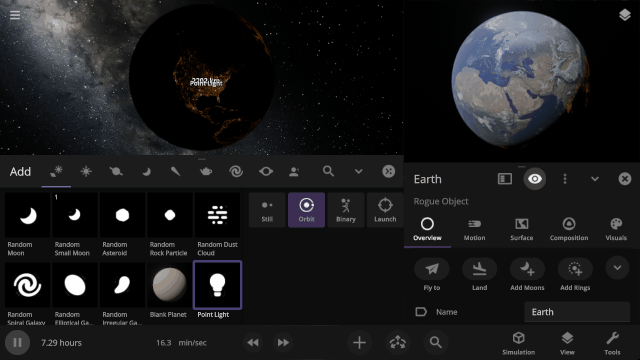
- Simulating supernovas emitting light (Spoiler – they’re really really bright).
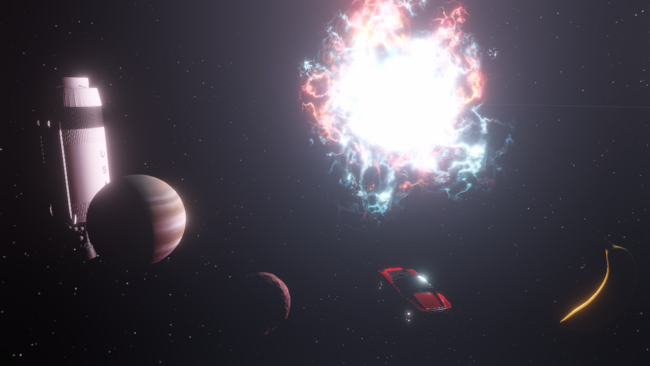
Life Simulation: Let There Be Life!
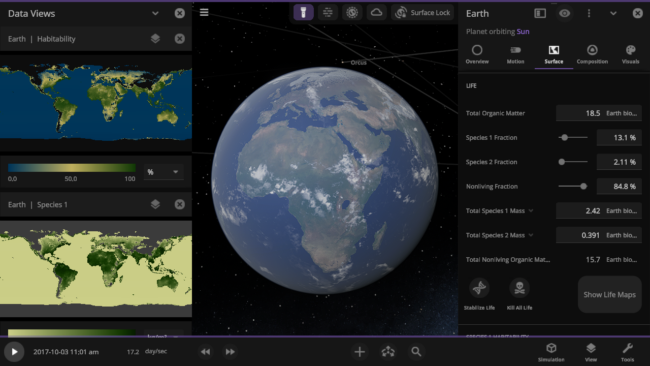
Last year, we began working on life simulation after adding materials like carbon dioxide and oxygen to planet atmospheres. Vegetation will grow, spread, die, and be eaten on planet surfaces, similarly to how we simulate temperature, liquid, and gas flow.
- Simulating Vegetation
- Life can spread to other planets on fragments from collisions.
- As vegetation grows and dies, the amount of carbon dioxide and oxygen in the atmosphere will change.
- Vegetation will grow, spread, and die based on the local conditions on the surface of a planet.
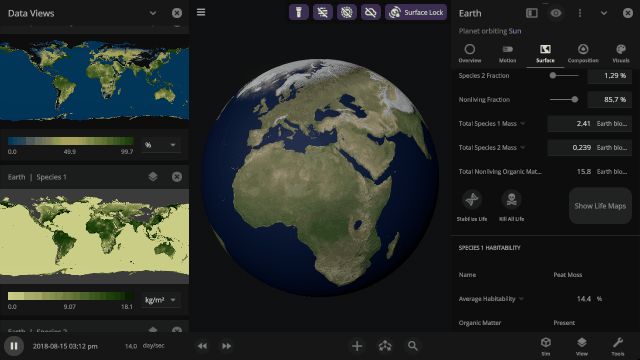
- You’ll be able to customize the conditions needed for life on your planets so your plants can absorb methane and emit hydrogen, for example.
- You can even set the conditions to make life grow on Titan!
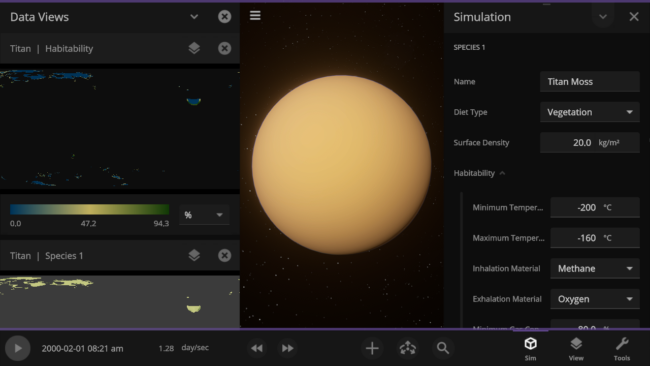
- Animals & the Circle of Life
- Herbivores, like vegetation, will also be simulated on planet surfaces. The overall herbivore mass will be tracked and will also depend on how much vegetation there is on the planet to support them.
- The names and life requirements of the two species will be customizable as well, so you can let your imagination run wild to simulate your favorite plants and animals, like cows, trees, whales, dik-diks, skunk cabbage, aliens, unicorns, you name it (literally)!
- Future Models
- We plan to make our food chain even more complex with carnivores in the future.
- You’ll be able to quickly cause catastrophic events leading to mass extinctions. For now, we have a simple Kill All Life action.
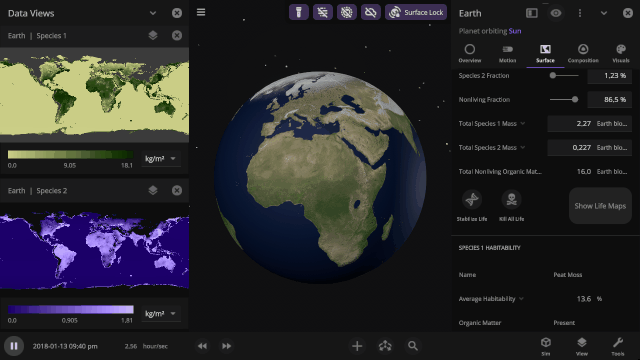
Advanced Physics Technology
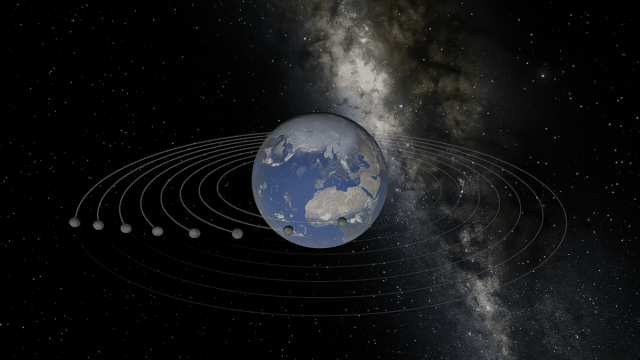
Improving collisions with more realistic friction and craters, simulating atmospheric drag, which allows meteors to burn up in the atmosphere, and continuing to optimize our physics simulation are all things we’re working on this year.
- Advanced Game Engine Features
- We’re continuing to reconstruct our simulation architecture using the Data-Oriented Technology Stack (DOTS) from Unity, the game engine we use to build Universe Sandbox. We’re excited about the expected performance gains and future opportunities it brings. We plan to roll these changes out in multiple phases.
- Phase 1 replaces our current physics engine with a new DOTS-based system that will make Universe Sandbox easier to maintain and improve.
- Upgrading to DOTS in phase 1 lays the foundation for everyday, non-spherical object collisions (like two dice), building and flying spacecraft, and constructing megastructures like Dyson spheres.
- Phase 2 will unify our collision simulation to allow for more realistic collisions of celestial objects like planets and everyday objects like pigeons. This phase will allow
- Objects to physically deform due to craters, fragmentation, laser impacts, and more, influencing how they collide.
- Everyday objects, including simple shapes like dice and complex shapes like spacecraft, to collide according to their unique forms instead of as spheres, also called rigid-body physics.
- Phase 1 replaces our current physics engine with a new DOTS-based system that will make Universe Sandbox easier to maintain and improve.
- We’re continuing to reconstruct our simulation architecture using the Data-Oriented Technology Stack (DOTS) from Unity, the game engine we use to build Universe Sandbox. We’re excited about the expected performance gains and future opportunities it brings. We plan to roll these changes out in multiple phases.
- DOTS optimizes our simulation by efficiently running more computations simultaneously on the CPU, allowing for more objects, collisions, and fragments.
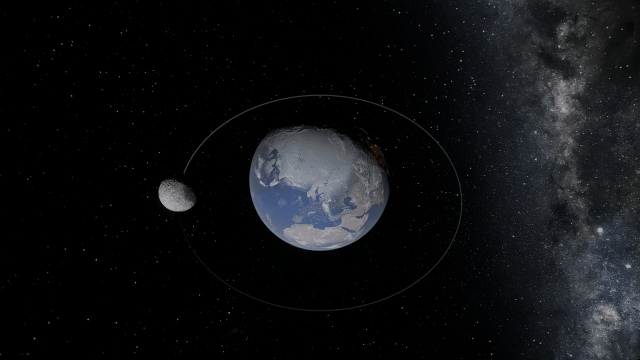
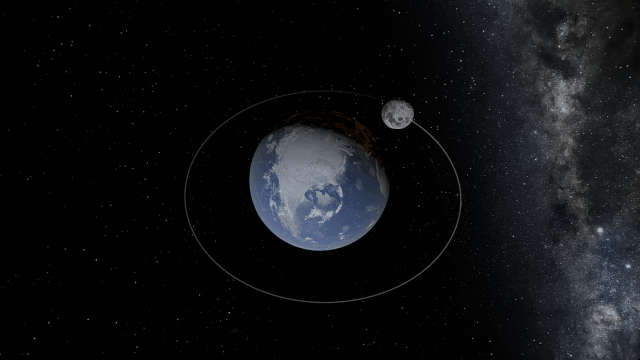
- New Gravity Simulation
- We’re experimenting with a new method of gravity simulation, called Barnes-Hut simulation, to allow rock fragments and dust clouds to attract and merge, forming planets & moons. Currently, these particles can only be pulled on and cannot form planets independently.
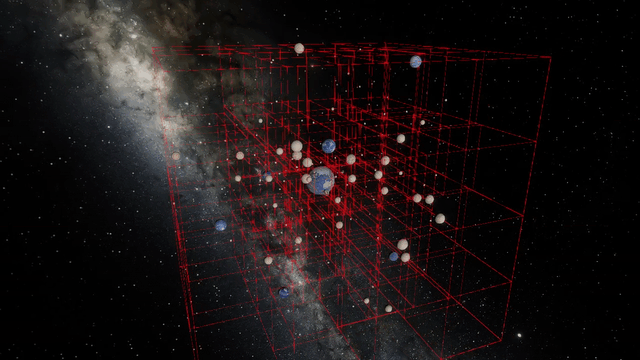
- Grinding to a Halt
- Our new friction model will simulate craters stretching out as objects skid across each other’s surfaces during collisions. In our current simplistic model, craters are always circular.
- Visually Deformed Objects
- Most objects in Universe Sandbox are spheres, but in real life, some rotate so quickly that they stretch and flatten, like the dwarf planet Haumea. We’re working to simulate this stretching visually.
- This will not affect the object’s physical shape, collisions, or surface simulation until after Phase 2 of our restructuring our simulation with DOTS is complete.
- Most objects in Universe Sandbox are spheres, but in real life, some rotate so quickly that they stretch and flatten, like the dwarf planet Haumea. We’re working to simulate this stretching visually.
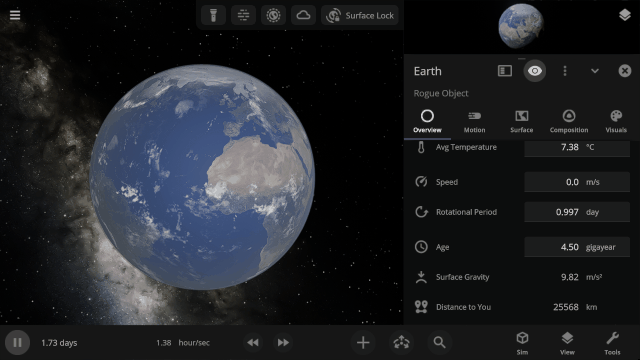
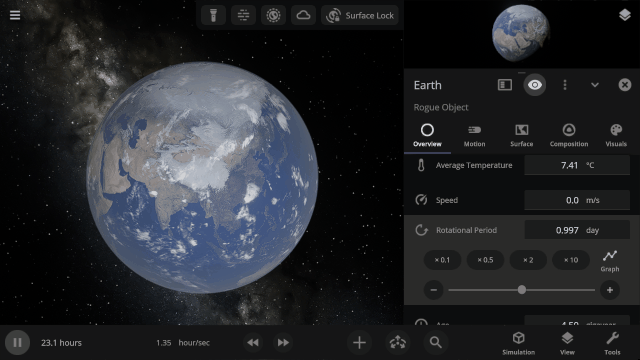
- Atmospheric Drag
- To simulate meteors, we’re working on adding a drag force so objects burn up while traveling through a planet’s atmosphere. Currently, objects pass through atmospheres unchanged.

- Tidal Locking
- We’re planning to simulate objects becoming tidally locked, where the same side of one always faces the other as they orbit each other, like the Moon to the Earth.
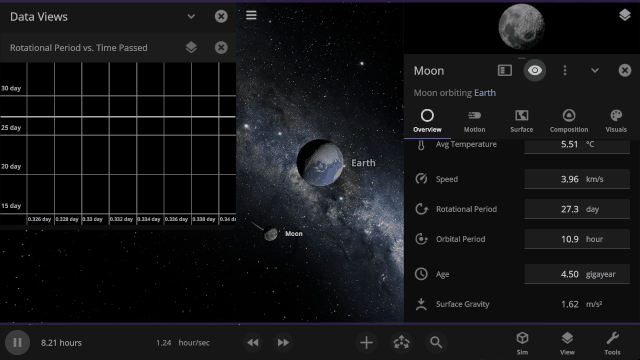
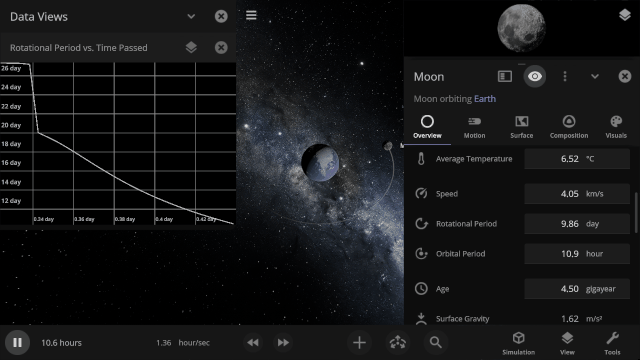
- Mathematical Points
- We’re planning to add more visualizations of useful mathematical points and boundaries, including
- Lagrange Points – the points where the gravitational influence of two objects is equally strong. Objects placed at these points orbit in a stationary position relative to the two objects like the James Webb Space Telescope is to Earth and the Sun.
- Hill Spheres – the boundary within which a moon is gravitationally bound to a planet.
- Roche Limit – the boundary where the tidal forces pulling on an orbiting object are stronger than its self-gravity, ripping it apart.
- We’re planning to add more visualizations of useful mathematical points and boundaries, including
Universe Sandbox on Phones & Tablets
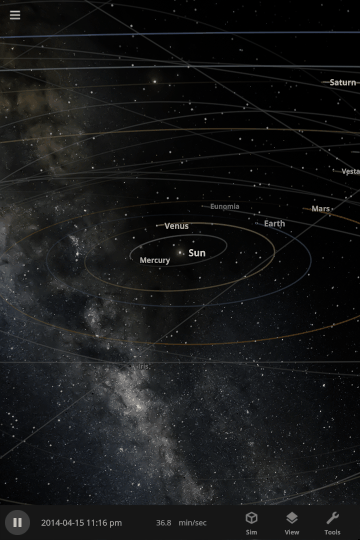
Getting Universe Sandbox on mobile devices (iOS & Android) is a major focus again this year. We’ve made a lot of progress with our new graphics update and interface system, which significantly improves usability on small touchscreens, but there’s still a lot to do.
- Small Screen Interface
- Our new interface system automatically positions, resizes, and closes panels so you can always see the simulation. This system optimizes interface usability for any screen size, from small touch screens to ultrawide monitors and we’re planning to continue improving and polishing it this year.
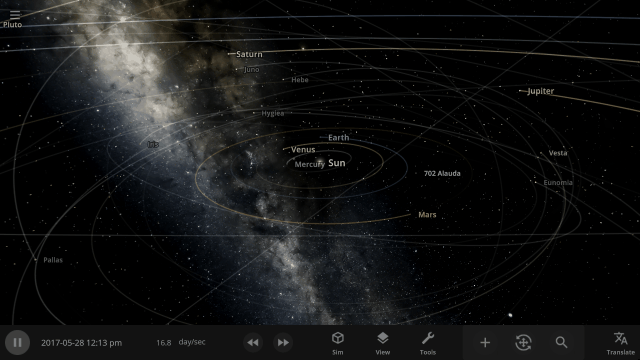
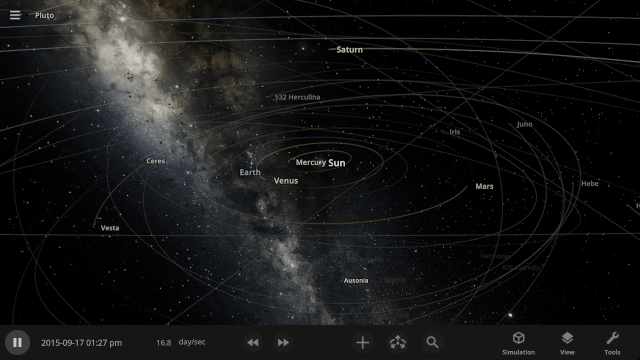
- Running the Universe
- Boosting performance across all platforms is another mobile requirement. We’ve been improving interface responsiveness, resource utilization, and optimizing start-up times.
- Rebuilding our simulation architecture will also bring necessary performance boosts to desktop and mobile devices alike.
- Automated Test Suite
- We’re expanding our automated tests, which cover collision physics, simulation performance, and more, and the ways we compare their results, to help us catch and fix bugs across desktop and mobile devices faster.
- More Information
- Universe Sandbox on mobile is built from the same codebase as the desktop version and will have the same features.
- There is no mobile release date yet.
- We plan on it being a one-time paid app with no ads or in-game purchases.
- Price is not finalized.
- Minimum requirements are not finalized.
- Sign up for our mobile mailing list to receive updates about mobile development
http://universesandbox.com/mobile/
And Beyond
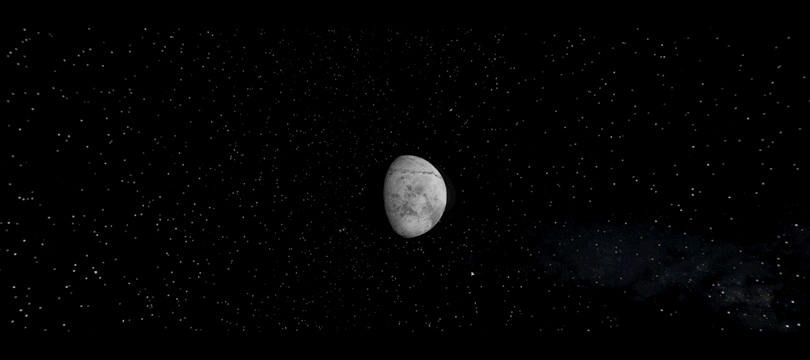
Our future goals include adding detailed planet surfaces, simulating the life cycle of a star, and allowing you to use custom elevation maps and textures on your planets. These are in early development, and we don’t know when they will be released.
- Detailed Planet Surfaces
- Imagine flying over mountains and through canyons on planet surfaces in Universe Sandbox. We’re still experimenting with ways to add more details to planet surfaces, but we’re excited about the possibilities.
- Imagine flying over mountains and through canyons on planet surfaces in Universe Sandbox. We’re still experimenting with ways to add more details to planet surfaces, but we’re excited about the possibilities.
- Planet Customization
- We want to give you even more control over planet appearances. Satisfy your world-building desires and create a planet using custom maps or images, like a picture of your dog.
- We want to give you even more control over planet appearances. Satisfy your world-building desires and create a planet using custom maps or images, like a picture of your dog.
- Stellar Lifecycles
- Realistically simulating how stars burn hydrogen into helium (and heavier elements) and die violent deaths is complex, but we’re planning to rebuild our star simulation so we can bring stellar evolution to Universe Sandbox.
- Realistically simulating how stars burn hydrogen into helium (and heavier elements) and die violent deaths is complex, but we’re planning to rebuild our star simulation so we can bring stellar evolution to Universe Sandbox.
- Volatiles
- To simulate comet tails streaking through space, we plan to overhaul our volatile system, which determines how gas escapes from a planet’s atmosphere into space.
- To simulate comet tails streaking through space, we plan to overhaul our volatile system, which determines how gas escapes from a planet’s atmosphere into space.
- Gamepad and Steam Deck
- What could be better than playing Universe Sandbox from the comfort of your couch? We’re working on adding gamepad support for more ways to control your universe. This will improve our Steam Deck support and has the potential to support other gamepad-based consoles in the future.
We’re excited to bring so much to Universe Sandbox this year, and we can’t wait to share it with you!

Space in a New Light | Update 35
Mar 3rd
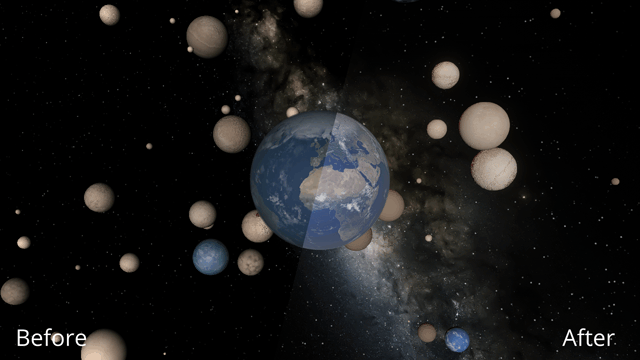
Immerse yourself in a universe more awe-inspiring and realistic than ever before with our next-generation graphics update! We’ve also added many interface improvements to make controlling the universe easier and more intuitive. You need to see it to believe it.
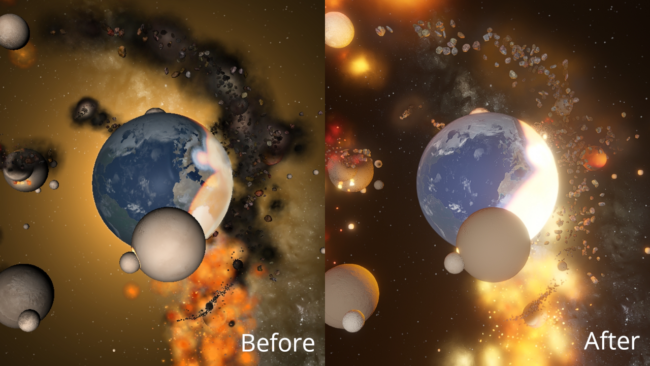
A More Realistic Graphics Engine
We’ve completely replaced our 10-year-old graphics technology with a state-of-the-art system to make Universe Sandbox look more realistic with physically-based lighting. This new system has required us to update our minimum requirements. Learn more.

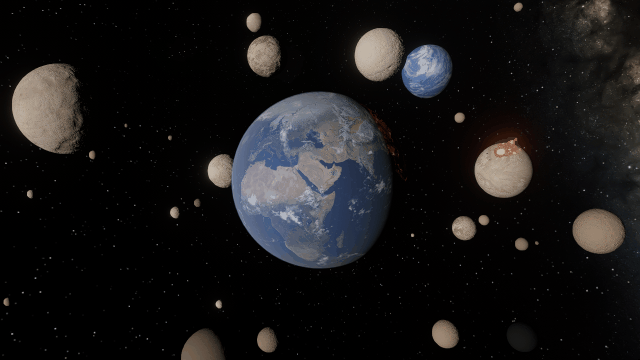
Edit Objects Simultaneously
The properties panel now lets you edit multiple objects at once. Use the new Multi-Select tool to select multiple objects and try increasing the mass of every object in the Solar System simultaneously!

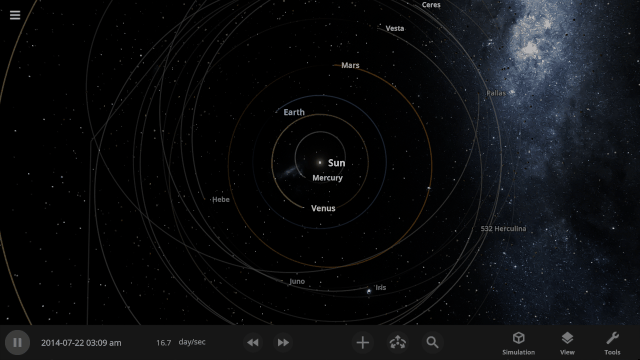
Automatic Interface Management
Focus on manipulating the universe instead of managing panels with our new interface system that automatically positions, resizes, and closes panels so you can always see the simulation. This immersive system also provides better support for ultrawide monitors and small screens (like smartphones).


More Highlights
Focus on realism
Making Universe Sandbox look as realistic as possible with physically-based lighting has made stars realistically bright, and collisions result in blindingly realistic hot spots. It turns out there’s a reason you’re not supposed to look at the Sun.
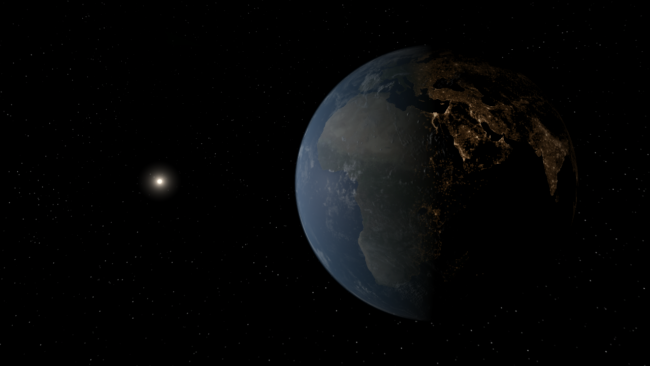
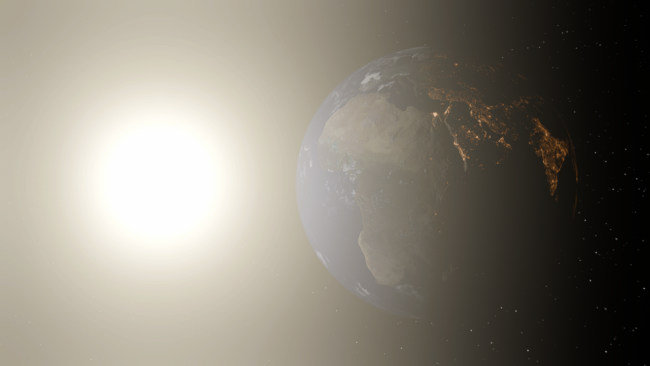
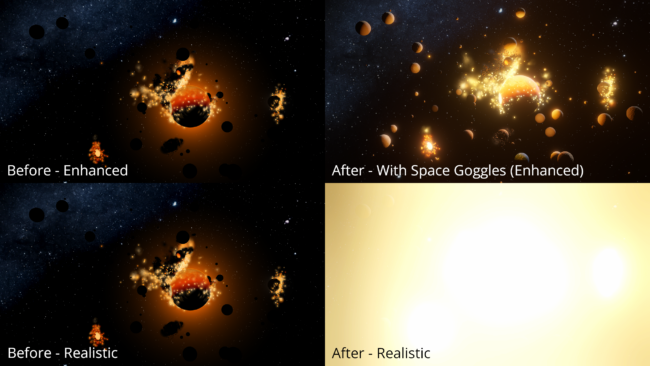
Light from hot planets
Hot objects now emit light based on their temperature so you can use intense impacts to light up your simulation. Previously, only stars could emit light.
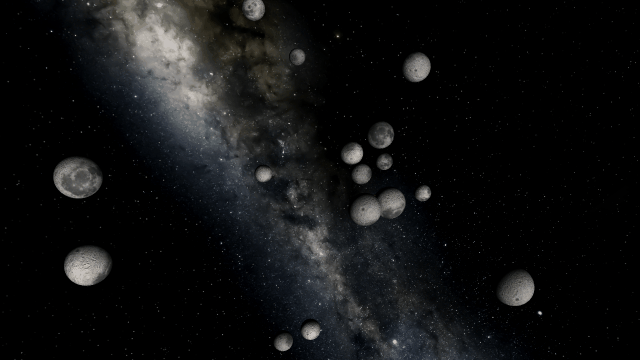

Localized glow
Objects now bloom only in hot areas, like those created from lasers or collisions, instead of being surrounded by a single uniform glow.

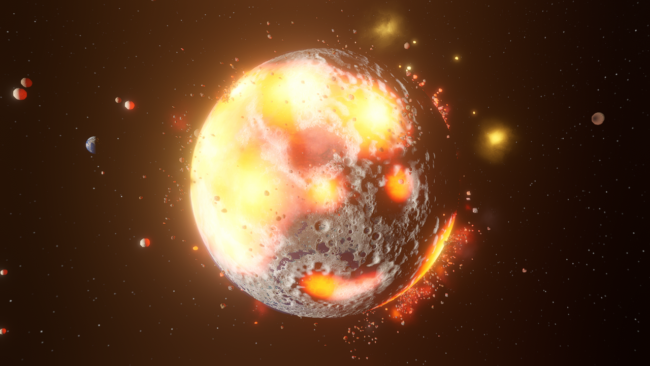
Smoothly blending clouds
Gas and dust clouds now smoothly pass over planets instead of creating sharp intersections.

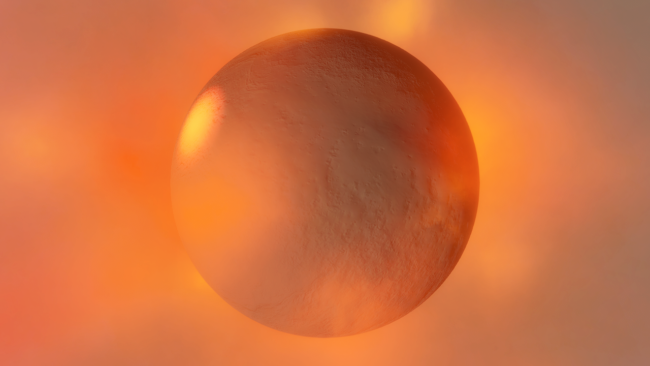
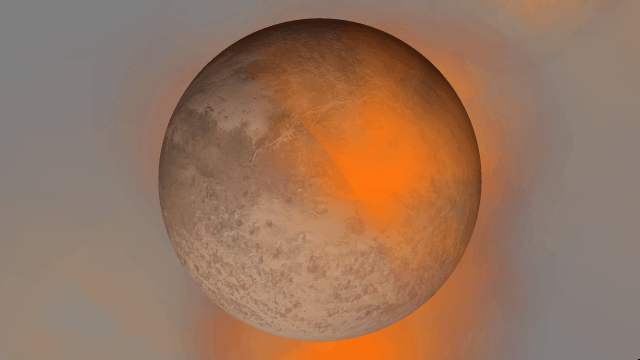
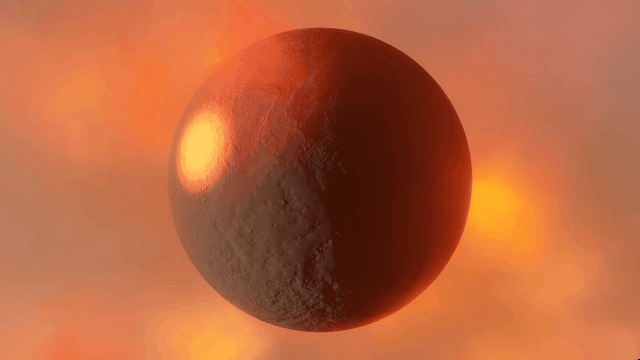
Realistic artifacts
The surfaces of human-scale objects, or artifacts like spacecraft, have shiny, reflective metals and rough, rugged edges that interact with light more realistically.

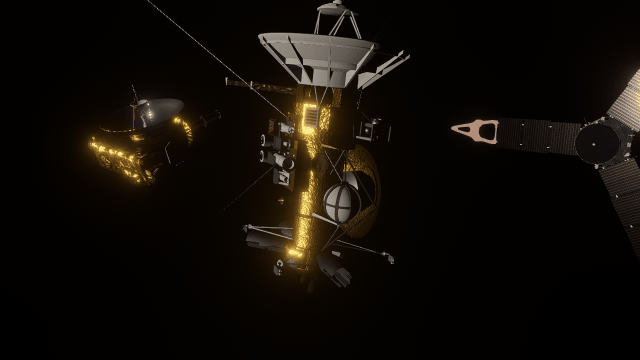
Math in text fields
All object properties now support basic math. Try typing “*42” into a property to multiply by 42 or “/3” to divide by 3, for example.
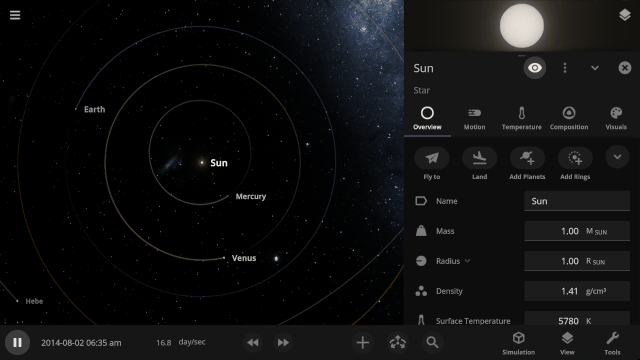
Explore planet surfaces
Move across the surface of a planet with the WASD keys after landing on it by zooming in for a closer look or using the Land action button in the planet’s Overview tab.

Light intensity with distance
Objects are now always realistically lit based on their physical distance from a light source. Previously, objects were lit with the same intensity based on the camera’s distance from a light source instead of the object’s distance from a light source.
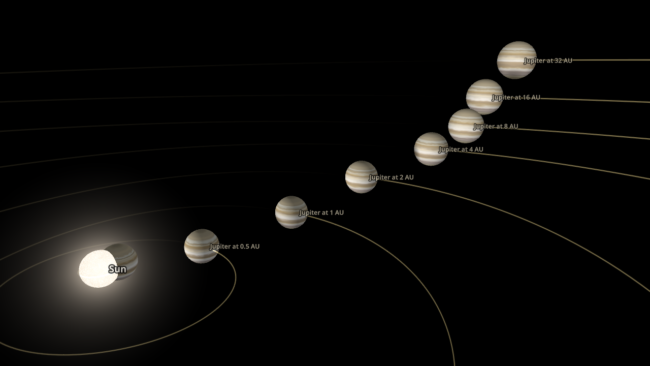
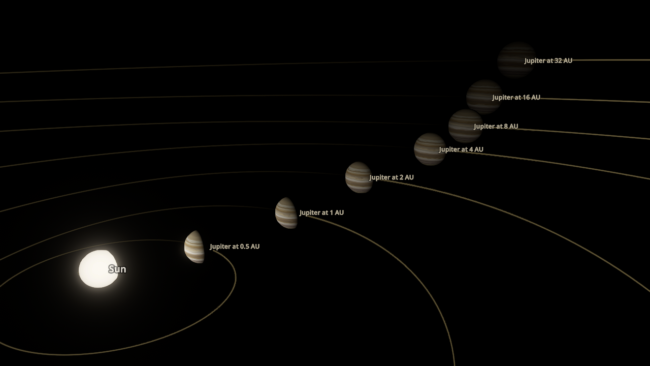
Light warping
Black holes now realistically warp the visuals from other black holes instead of blocking any black holes behind them from being seen. The images below are from the same simulation, with custom colors in the “Before” image that make the black holes easier to see.
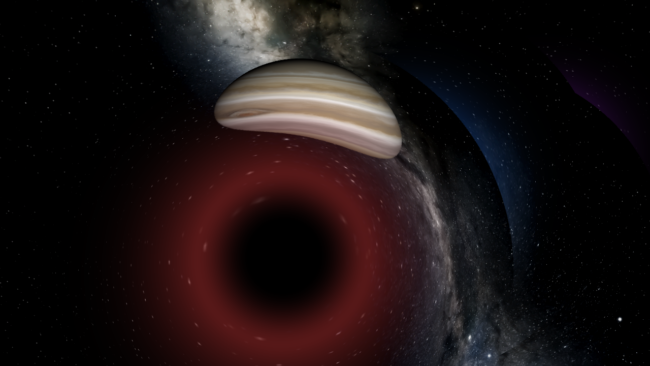
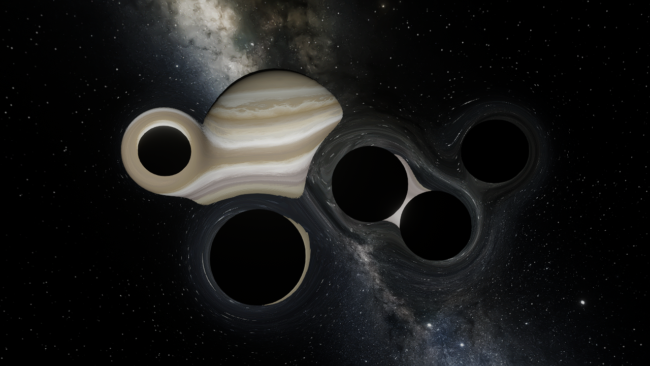
Updated View Panel
We’ve improved the View panel with more intuitive controls and lighting options
- You can now see and change the camera target from the View panel.
- Space Goggles provide a more comfortable view that filters the brightness to show the action while preserving realism. Turning them off switches to an unfiltered realistic view where stars, hot objects, and collisions can be blindingly bright.
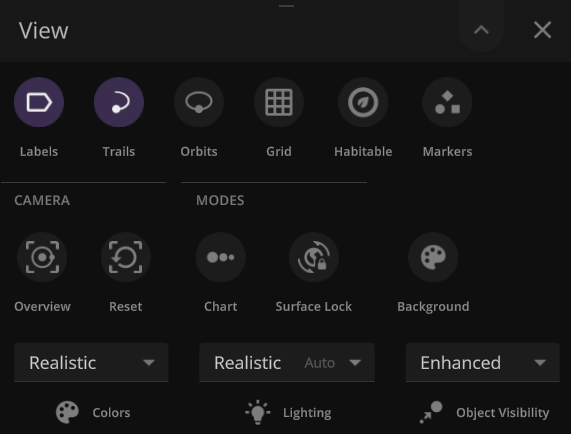
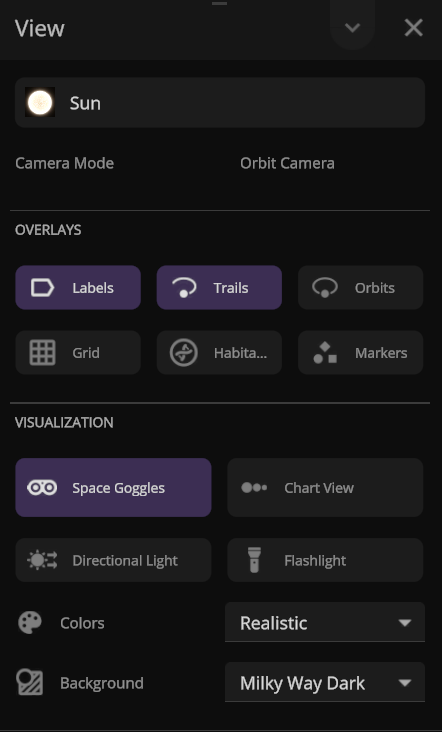
Action Buttons
We’ve added all-new Action buttons at the top of every Properties tab. Quickly fly to a planet or explode it. Your call. (These buttons replace the Action tab.)
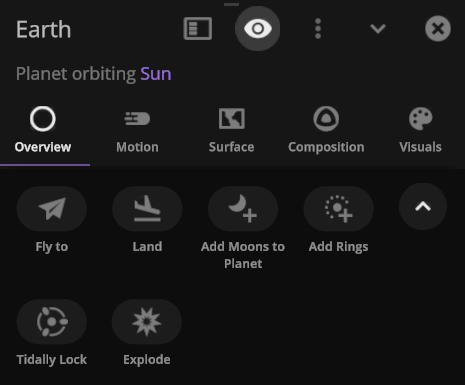
- Save objects or learn more about real astronomical ones with our new Wikipedia button under Additional Actions.

Color maps
We’ve updated our Data View color maps to make them more perceptually uniform. We’ve also added colorblind-friendly color maps and the ability to invert them.
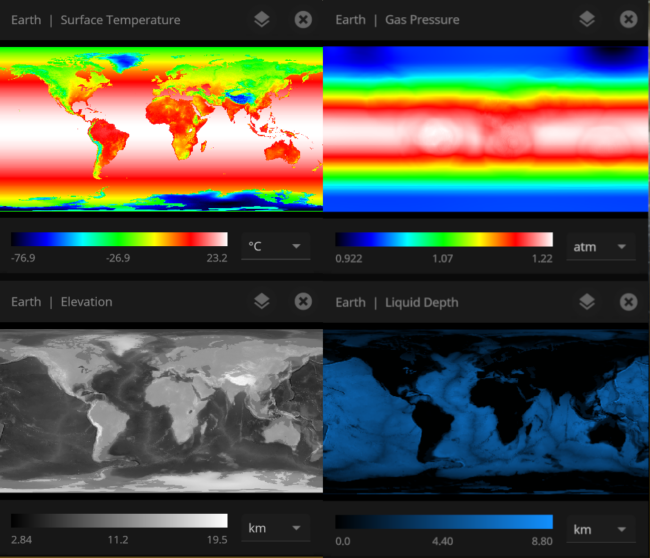
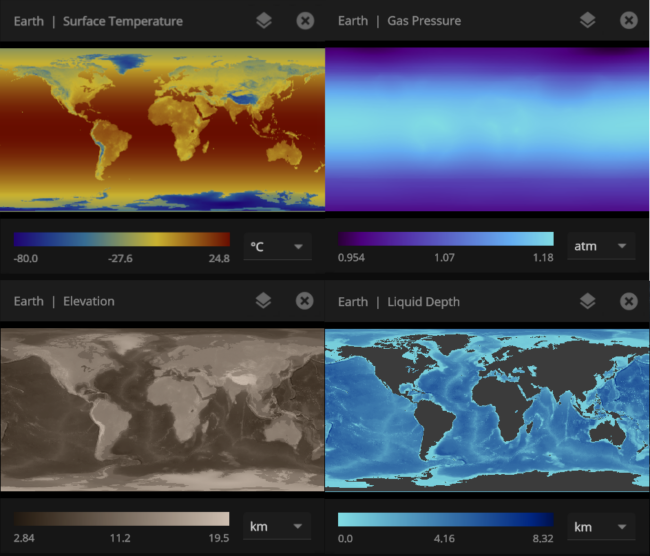
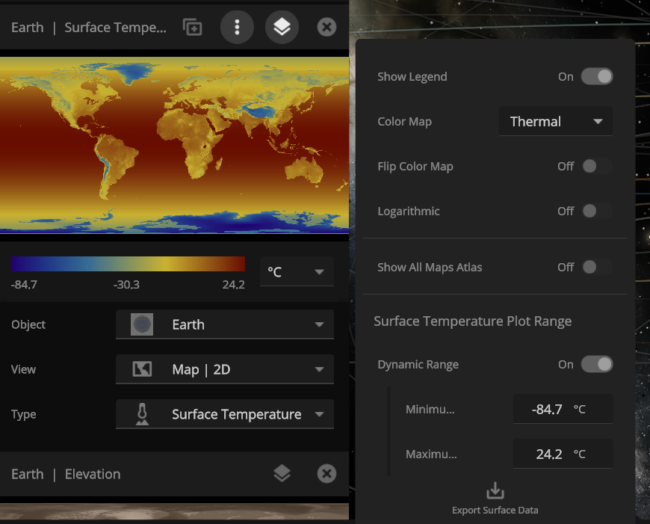
Inspecting the surface
Use the new Inspect tool to quickly see the temperature, material composition, elevation, and other properties of specific points on a planet’s surface.
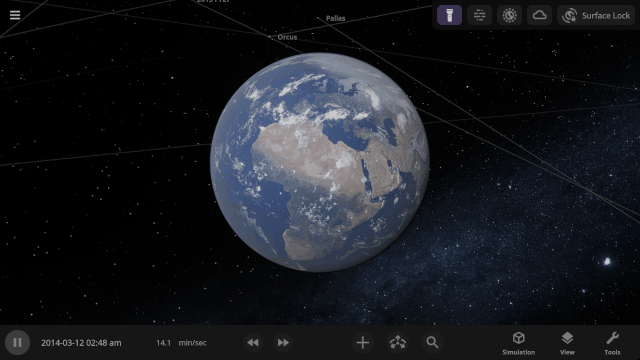
Selectable Orbital Parent
It’s now easier to create binary systems orbiting a common center of mass (also called a barycenter). View and adjust an object’s Orbital Elements around a binary by selecting the system’s barycenter as the object’s Orbital Parent.
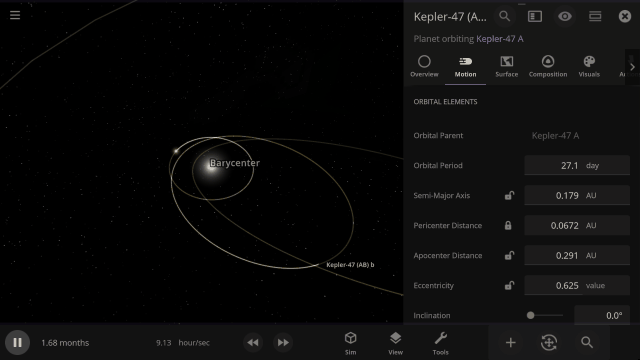

Choose your Startup Simulation
Choose the simulation that automatically opens when Universe Sandbox starts, from any of our included simulations to your own custom work in progress. Just go to
Home > Settings > General > Experience > Startup Simulation

New hotbar
The hotbar has been overhauled so you can add even more shortcuts to manipulate the universe. To edit your hotbar, go to Settings > General > Edit Hotbar or right-click on it and then select “Edit Hotbar.”
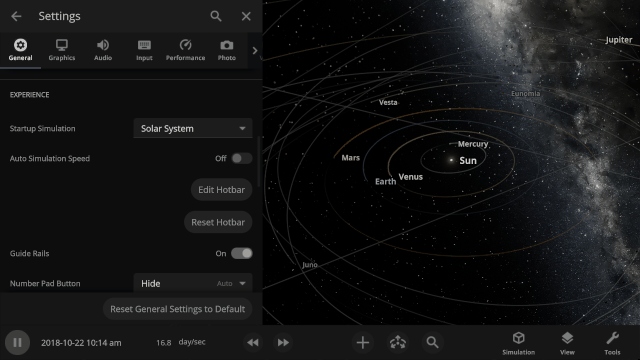
A Potentially Dangerous Asteroid
Watch the projected path of one of the most potentially dangerous asteroids ever detected, YR 2024, as it flies near Earth in 2032, or check out a What If? scenario of what the impact might look like under
Close Encounter of Asteroid YR4 2024 with Earth in 2032
And
What If Asteroid YR4 2024 Collides with Earth in 2032?
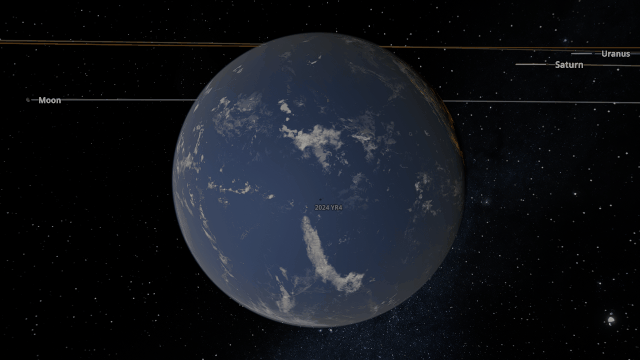
New Minimum Requirements
Improving our graphics means we need to update our minimum hardware requirements to include
- 4 GB dedicated video memory (up from 2 GB). 8 GB is recommended.
- 4 GB RAM (up from 2 GB). 8 GB is recommended.
- 4 GB of free disk space (up from 2 GB).
- Windows:
- DirectX 12
- Windows 10 21H1+ (support for Windows 7 SP1, 8, 8.1, and older versions of Windows 10 will be dropped)
- Apple:
- Silicon (M1 or newer). Intel Mac will no longer be supported.
- Universe Sandbox may still run on Intel-based Macs, but we cannot guarantee good performance for every Intel-based Mac.
- macOS 11.0+ (support for macOS 10.14 and 10.15 will be dropped)
- Silicon (M1 or newer). Intel Mac will no longer be supported.
While it is never fun to have support dropped, this new graphics system will allow us to improve performance and add new features to Universe Sandbox now and well into the future.
We’ll ensure all users affected by this change can always access the version of Universe Sandbox from before this minimum requirements update. Learn how.
Check out the full list of What’s New in Update 35.
Please report any issues on our Steam forum, on Discord, or in-game via Home > Send Feedback.
